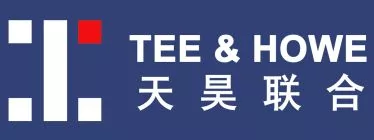Chinese texts of the IMR are available at (NOT on CNIPA website yet):
https://www.gov.cn/zhengce/content/202312/content_6921633.htm
It was a strange coincident that when I visited the CNIPA last week at the CNIPA/American Bar Association Liaison Council China delegation 2023 (from 12-15 December 2023), I made joke at the CNIPA that whether the IMR would be released before Christmas as our present, which now came true.
And as mentioned to my peers at AIPLA and IPO, my guess that we would not have another chance to provide comments on the IMR before finalization also came true. I hope I can equally be good at predicting other better and more important things.
In my view, the major changes are as below (Article nos. are those in the current 2023 version) [texts in italic and square brackets are my own comments]:
1) Specific allowance of electronic communications and records (Articles 2 and 4).
2) Specify that the restoration deadline for failing to file a request for re-examination is two months from the deadline of filing the request for re-examination (Article 6) [Note: This has been in practice for a long time, but not clearly specified in the IMR before the 2023 version].
3) Added that for secrecy examination (Chinese version of the foreign filing license), decision could now be issued for at most 6 months, with 2-months extension to be obtained by the CNIPA (Article 9) [Note: Used to be 4 months].
4) Partial design is to be presented by combination of dotted-lines and solid-lines, together with view(s) of the entire product (Article 30).
5) The following specifications regarding claiming priority (Article 35):
- A design patent application could claim priority from invention patent or utility model application.
- For claiming priority from a local CN application, priority could not be claimed for subject matter in an already granted patent [Note: This could be an issue particularly for Chinese applicants, who like to rush for grant of Chinese patents, particularly for utility models].
- The earlier design patent application would be deemed withdrawn once priority is claimed by a later filed application [Note: To avoid double patenting].
- Allowing restoration of priority within 2 months from the Chinese filing date (Article 36), or 2 months from the date of entry of a PCT application (Article 128).
- Allowing addition or correction of priority to be within 16 months from the earliest priority date, or 4 months from the Chinese filing date (Article 37).
6) Allow correction of filed specification using incorporation by referencing the priority document within 2 months from the Chinese filing date, or the date specified by the CNIPA (Article 45) [Note: There is no recitation of such incorporation by referencing the priority document mechanism for PCT national phase entries in Chapter 11 of the IMR].
7) Specifying allowance of delaying examination (Article 56) [Note: In practice such delays exist for quite some time. I have been using such delays for more than 3 years].
8) Specifying alleged infringer could obtain the patentability evaluation report issued by the CNIPA for granted utility model and design patent (Article 62). This report shall be issued within 2 months after the request is filed. Once the report is established, anyone could "look up or copy" the report (Article 63). [Note: While it is disappointing that not everyone, for example a potential licensee, could request the report as in the November 2020 draft, it is good to see that once established, the report is available to anyone, which is new in this final version.]
9) Article 69 adds that application not filed in good faith, and not based on actual inventive activities (Article 11 of the IMR) is one of the grounds of rejection or invalidation. [Note: It will be interesting to see how this is proven at invalidation. May be from ex-employees?]
10) Patent term adjustment (due to delay from the CNIPA):
- Requires filing of a specific request at the CNIPA within 3 months from grant (Article 77).
- Calculated as below (Article 78):
- after 4 years from application date; AND
- after 3 years from the date of filing the request for examination; AND
- minus the following unreasonable delay from the applicant [Note: In the November 2020 draft, suspension due to ownership disputes was also included as one of these delays, but was removed in the final version.]:
- OAs not responded to within non-extended deadline.
- Delay for examination has been requested.
- Incorporation by reference has been invoked.
- Newly introduced reasonable delays including re-examination (due to rejection of an application), having ownership dispute, and so on, that are not counted for PTA (Article 78(3)).
11) Drug patent term extension (DPTE) requirements are as below:
- Patents that could enjoy DPTE include new drug product patent, manufacturing method patent, and medical use patent (Article 80) [Note: Two issues. First, it is unclear whether manufacturing method patent, and medical use patent have to be directed to new drug product. Second, China still does not allow method of treatment claims, so the medical use patent could only be directed to so-called "Swiss-type" claims].
- The DPTE works as below (Articles 81 and 82):
- Restrictions from Article 43 of the Chinese Patent Law 2020:
- The 5-years limitation - The term extended is not more than 5 years.
- The 14-years limitation - The total effective patent term after drug marketing approval DMA is granted in China cannot be more than 14 years.
- Article 81 of the IMR:
- Apply at the CNIPA within 3 months from the date of grant of the DMA
- One drug, one patent; one patent, one drug
- DPTE to be granted = Date of DMA – patent application date – 5 years, while fulfilling the above requirements in a.
12) At DPTE, the protection scope of the patent is limited to the diseases granted under the DMA (Article 83).
13) Various Articles 85-91 on open license (volunteer license from the patentee, similar to the UK license-as-of-right mechanism).
14) Inventor renumeration, allowing stocks, stock options, dividends, and the like as forms of renumeration (Article 92).
15) Increased amounts of inventor reward at grant (to be given to the inventor in 3 months from grant), invention patent RMB4000 (previously 3000), utility model or design patent RMB1500 (previously 1000).
16) For cases of no agreement, inventor renumeration and awards are to be given to inventor reasonably according to the Law on Promoting Transformation of Scientific and Technological Achievements PTSTA Law (Article 92) [Note: For details of this PTSTA Law, please see my article on inventor renumeration in China published in the October 2021 issue of the UK CIPA Journal. Simply speaking, you do not want to go there, even with "reasonably".]
17) Specify definitions of patent infringement cases that could be decided by the CNIPA as below (Article 96) [Note: Which is up and running, CNIPA has accepted at least two, and decided on one so far]:
- Involving significant public interests.
- Having significant impact on industry development. [Note: This is new, if my memory is right]
- Important cases across provinces, autonomous regions, and municipal cities. [Note: This bar at the CNIPA is not that high]
18) Violating good faith could be punished with warning and a fine of RMB100,000 or less (Article 48) [Note: would this be too little and weak?......].
There are also many articles regarding the Hague Convention. Give me some time to grind through them.
Transition at 20 January 2024
The IMR will come into force on 20 January 2024. The transition rules are available at below:
The transition rules specify that the IMR 2023 are applicable to the following:
- Invention patent and utility model applications filed, or PCT national phase entry on or after 20 January 2024 [Question: Are PCT entries utilizing the 2-months restoration period included? If so, it may be advantageous to delay the CN entry for restoration and/or correction of priority claim, and correcting specification using incorporation by reference].
- Design applications filed on or after 1 June 2021 (the date when the Chinese Patent Law 2020 came into force), for partial design.
- Patent Term Adjustment PTA requests filed on or after 1 June 2021. It is clear from these transition rules that a fee is required for a PTA request, even for those patents with full term expired before 20 January 2024 [Rare, but could happen theoretically].
- Applications pending on or after 20 January 2024, and invalidation petitions filed on or after January 2024 are subject to addition ground of "bad faith".
- Secrecy examination decision issued on or after 20 January 2024 (i.e. could have the additional 2 months waiting time).
- Patent term adjustment (compensation due to delay at the CNIPA, available to all patents), and drug patent term extension (compensation due to drug marketing approval delay, available of course only to drug patents) available to patents drug marketing approval granted on or after 1 June 2021.
- Deadlines of notifications issued on or after 20 January 2024, i.e. no more 15-days mail period (see Article 7).
Toby's observations
If my memory is correct, 1), 4) to 8), 10), 11), 13), 14), and 17) above are the same as those in the November 2020 draft (the only draft that received comments), except the parts that I mentioned as new above.
For the new points, 2), 9), 12), and 15) look reasonable to me. It would be interesting to see developments on 9) [invalidation based on bad faith] and 12) [At DPTE, the protection scope of the patent is limited to the diseases granted under the DMA].
The main problem to me is 16). As an employee, giving inventors renumeration and awards according to the PTSTA Law is unimaginable (please see my article for details).
Other concerns of mine in this final IMR are as below:
- The potential additional two months for secrecy examination.
- While correction of filed specification of filed specification using incorporation by referencing the priority document is now possible, there is no specific recitation for PCT national phase entry into China. May be this could be done by the date specified by the CNIPA?
- Disappointing to see that patent term adjustment still requires filing of a specific request within 3 months from grant (and payment of a fee is also expected).
- DPTE is unclear on whether manufacturing method patent, and medical use patent have to be directed to new drug product. I can already smell huge legal battles.
In any event, it is good to see finally the following changes come to China, making the Chinese patent system more in line with the international norm
- A) Allowing restoration of priority.
- B) Allowing correction of filed specification using incorporation by referencing the priority document.
- C) Establishing the good faith principle (though proving bad faith could be an issue, particularly in light of the high threshold requirements on evidence in China).
- D) Clarification on restoration deadline for unfiled request for re-examination (no longer a hidden secret).
- E) Once a patentability evaluation report is established, the report is available to the public.
- F) More flexibility on how inventor renumeration could be given.
As always, thoughts and comments are welcomed.
The content of this article is intended to provide a general guide to the subject matter. Specialist advice should be sought about your specific circumstances.

